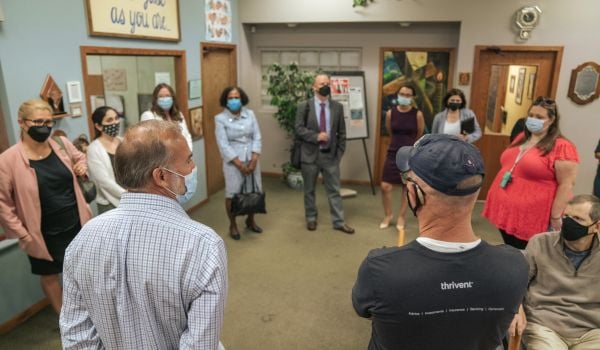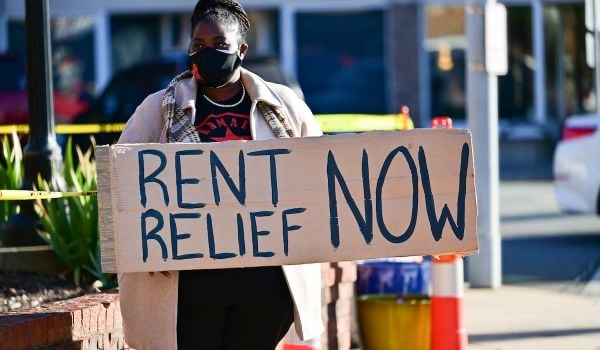On January 6 of this year, Bakersfield and Kern County, California, announced that they had reached a milestone known as “functional zero” for chronic homelessness. The narrowly defined term meant that the coalition of service providers in the area had found housing for virtually everyone in the community who had both a disabling condition and had experienced homelessness for more than a year, and that it was prepared to quickly house anyone else who entered chronic homelessness going forward. A week later, the Bakersfield Californian published a letter to the editor from a resident who noted that homelessness was still clearly visible in the city, and that with respect to officials’ claims about ending chronic homelessness, “none of this aligns with empirical evidence.” A few weeks after that, the Continuum of Care conducted the annual point in time count, which showed a substantial increase in people living on the street from the year before.
Clearly, homelessness has not ended in Bakersfield. So what does it mean to reach “functional zero” for a certain segment of the homeless population, and how significant is the achievement? For Bakersfield and other cities that have signed onto the “Built for Zero” campaign, it’s a balance between celebrating milestones that suggest ending homelessness is possible, and being clear about how much work remains before that ultimate goal can be reached. But for the Built for Zero campaign, it was critical to start with clearly defined terms, says Jake Maguire, a principal at Community Solutions and co-director of the Built for Zero campaign.
“We felt like we couldn’t ask people to join an initiative where they’re making a public commitment to get to zero without telling them how we’re measuring that or how they should measure it,” Maguire says.
Built for Zero, which recently received a $100 million grant from the the MacArthur Foundation, is an approach to reducing homelessness that’s based on segmenting the total homeless population into subcategories, building by-name lists of every person in those categories, and finding tailored solutions to house every person on each of those lists. Cities are said to reach “functional zero” for veterans when the number of homeless veterans in the community is less than 3, or less than the number of veterans that can be routinely housed every month, according to the campaign. For chronically homeless people, functional zero means less than 3 or less than 0.1% of the overall homeless population at the annual point-in-time count. Cities that have reached functional zero for veterans or chronically homeless people include Bakersfield, Rockford, Illinois, and Abilene, Texas, as Next City has reported.
Maguire says that homelessness has traditionally been conceived as a static problem — that there’s a population of people experiencing homelessness, and the solution is to count them every year, find or create the same number of housing units, and then the problem is resolved. Of course, cities have not been successful at that approach anyway, but Maguire says it’s a misunderstanding of how homelessness works. And functional zero is a definition that acknowledges that even if you house everyone in a certain population, “over time, new people will have a housing crisis,” Maguire says.
“The idea of the word ‘functional’ in front of ‘zero’ is a reaction to the misperception that ending homelesness means no one ever experiences homelessness again,” says Aras Jizan, who works on data analytics for the Built for Zero campaign.
The Built for Zero campaign is meant to get communities to improve their housing and homelessness networks so that they can help individuals through housing crises in a short period of time. Many people experiencing homelessness find their own way to housing, either permanently or temporarily, often within a couple of weeks, Maguire says. But Built for Zero cities prioritize categories of people who are in the greatest need of intervention. Jizan compares it to the unemployment system. Eliminating unemployment wouldn’t mean that no one would ever lose their job; it would mean that when they do, they’re able to quickly access unemployment benefits and then find another job. In the interim period, he says, “It’s not like the system is broken — that’s what good looks like.”
“The real question is, how quickly can you get somebody out of that situation?” Maguire says. “We felt like we had to have a definition that could accommodate that kind of dynamism.”
Still, when cities are close to reaching functional zero for a certain population — as Fremont, Colorado recently announced for veterans — they have to be careful about how they share the message, says Bethany Snyder, a communications specialist at Community Solutions. Some choose to say they “functionally ended” homelessness for a certain population. Some have chosen not to announce certain milestones until they can more clearly claim to have ended homelessness for everyone. Even when local officials make a point of describing the limits of terms like “functional zero” and “chronically homeless,” they sometimes get pushback from people who feel that the claims don’t line up with observable reality.
The campaign is meant to help cities improve how their systems serve the people who are most in need of help to exit homelessness, Maguire says. To do that, they need clearly defined goals and methods of monitoring progress, he says.
“We’ve been talking about ending homelessness for a long time. When you talk about how you would measure that and hold yourself accountable, that’s when the work really changed,” Maguire says.
This article is part of Backyard, a newsletter exploring scalable solutions to make housing fairer, more affordable and more environmentally sustainable. Subscribe to our weekly Backyard newsletter.

Jared Brey is Next City's housing correspondent, based in Philadelphia. He is a former staff writer at Philadelphia magazine and PlanPhilly, and his work has appeared in Columbia Journalism Review, Landscape Architecture Magazine, U.S. News & World Report, Philadelphia Weekly, and other publications.
Follow Jared .(JavaScript must be enabled to view this email address)


















